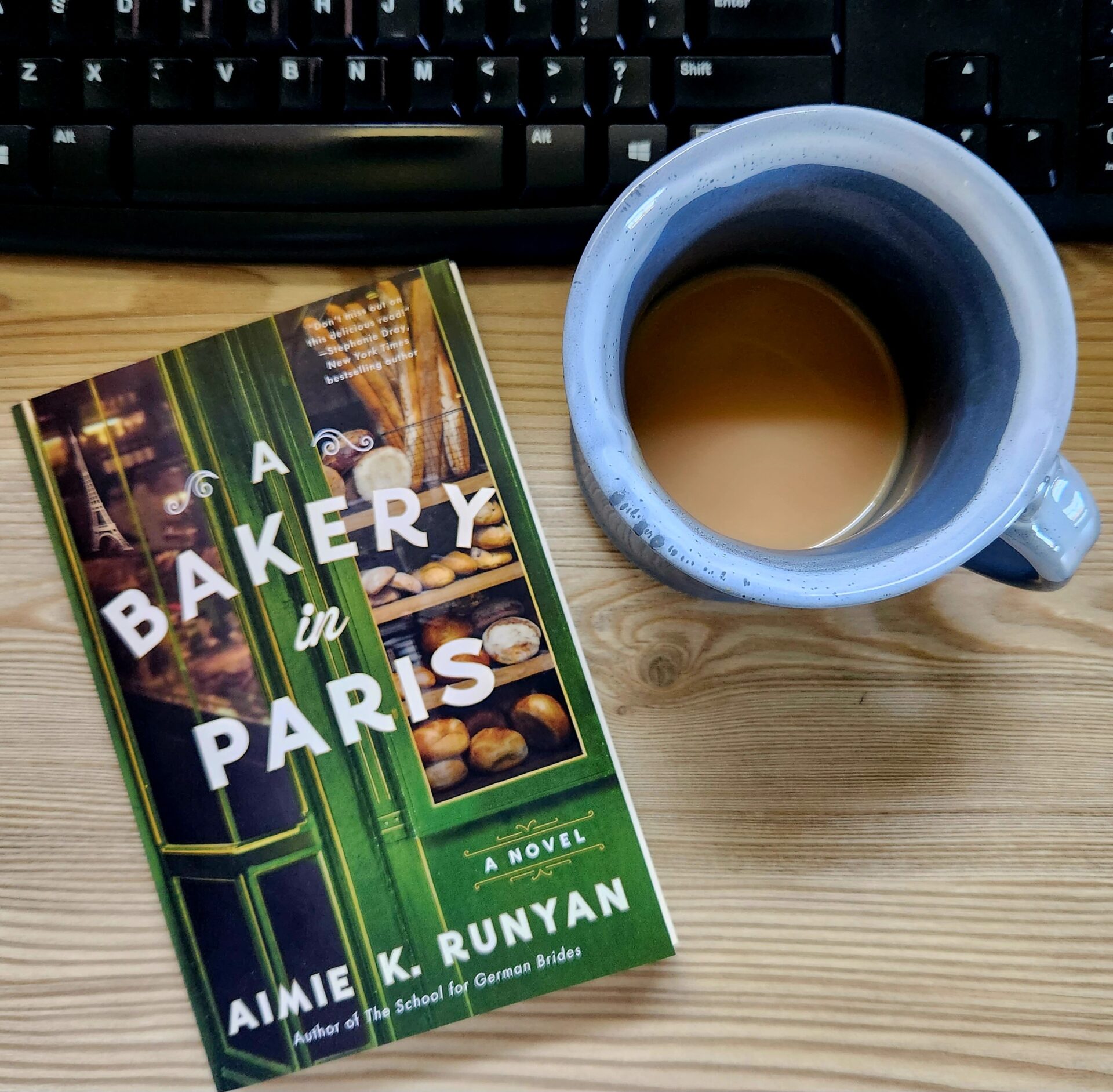Although I started off a little annoyed with A Bakery in Paris, this heartwarming story about two Parisian ladies — and their delicious French recipes — grew on me by the end of the book.
What’s A Bakery in Paris about?
A Bakery in Paris follows two women in the same family. There’s Lisette, who lives in 1870, and Micheline, who lives in 1946. Each woman finds comfort in friendship, baking, and freedoms she didn’t know she needed as she overcomes hardships during times of pronounced Parisian conflict.
Major themes in A Bakery in Paris are romance, found family, and, of course, baking. Lots and lots of baking surrounds Lisette and Micheline, and I loved these sections of the book the most. There are some “family recipes” for classic French desserts like Tart aux Pommes and Madeleines included right in the book.
I really liked the historical reminders of how baking was done back in “the day” – by hand. There was no electric mixer; when butter and sugar needed to be creamed together, you did it by hand. The attention to historical detail in the baking sections of the story was exactly what this foodie fiction lover was hoping to find in A Bakery in Paris.
Is A Bakery in Paris a WW2 book?
Despite the fact that A Bakery in Paris covers two different timelines, I would still consider it a “WW2 book.”
If you’ve been reading my blog for awhile, you know that I avoid WW2 plotlines. Why? Because they honestly depress the hell outta me, and I’m over it. I read to escape the hardships of life, not feel worse about them.
Although WW2 has ended by the time we meet 1940s Micheline, her narrative contains echoes and ramifications of that horrible time, and it was enough to remind me why I usually avoid reading books that focus, at least somewhat, on WW2.
The social and political strife during Lisette’s 1800s narrative is no fun and games, either. She dealt with more than her fair share of shit, too. But, for me, few topics are as depressing as WW2.
A “lighter version” of historical fiction
A Bakery in Paris is what I would call “light” historical fiction. While the story covers two tumultuous time periods, you’re not hit over the head with heavy historical facts all. the. freaking. time.
Author Aimie K. Runyan tackles hard topics – the loss of family during war, starvation, fighting for one’s freedom, classism, etc. – but a lot of the historical details just skim the surface of the true horrors people endured during those times. As a result, you get a glimpse into Lisette’s and Micheline’s upsetting worlds, but you’re not plunged into them, giving the story a “lighter” feel despite the difficult topics it covers.
As someone who prefers richly detailed historical fiction like Surviving Savannah and Hamnet, part of me wishes that A Bakery in Paris was more immersive. By the middle of the book, though, I was pretty grateful that Runyan skimped on all the unsavory details she could have woven into the book, particularly when it comes to the Prussian and the German forces invading Paris.
Lisette vs Micheline in A Bakery in Paris
I preferred Micheline’s story to Lisette’s in A Bakery in Paris. Lisette’s initial interactions with love interest Theo felt a little forced and cliché, so it was hard for me to believe in her narrative. And, their romance felt rushed and surprisingly aggressive, on her part, considering how sheltered and naïve Lisette repeatedly claims to be.
Eventually, Runyan’s writing relaxes and Lisette’s narrative feels more natural and believable, which helped me to appreciate her story better.
Micheline’s story, however, I liked from the get-go. (Yes, despite it being WW2-adjacent). Micheline’s gentle but determined character was relatable, and her damaged family’s plight tugged on my heartstrings. I cheered for Micheline to track down her mom who went missing in the war. I cheered for her to go to pastry school and re-open her great-grandmother’s bakery. And, when Micheline meets Laurent, I was all for her tumbling into the (flour) sack with him.
Should you read A Bakery in Paris?
If you’re looking for “lighter” historical fiction with a side of chaste romance and foodie fiction, I recommend reading A Bakery in Paris. It’s a solid story about the power of love and determination, friendship and family, and the importance of having faith in yourself.
As always, I highly recommend you read the Author’s Note at the end. It made me smile and added another layer of appreciation into the story.
What’s the book-inspired recipe for A Bakery in Paris?
Be sure to check back in for the book-inspired recipe for A Bakery in Paris – Simple Lemon Sablé Cookies.
Although I received a complimentary advance copy of A Bakery in Paris from Kaye Publicity, all opinions expressed in this review are my own, and I was not compensated in any way for this review or for any other promotion/publicity I’ve done related to this book.




























































































































































































































CJ, I read the sample of “The Bakery in Paris” and I was so drawn in. I’ll have to wait until I get home to try making the lemon cookies. Thanks for the wonderful review. Elle
Hi, Elle! Hurray! I’m so glad you got pulled into this story. It’s a good one. Especially all the baking bits! Let me know how the cookies turn out. 🙂